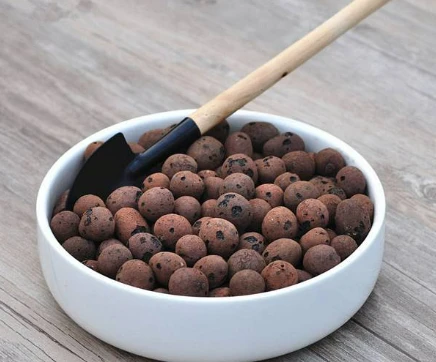- Overview of the Global Muscovite Mica Market
- Key Drivers Influencing Mica Price Trends
- Technical Advantages of High-Grade Muscovite Mica
- Supplier Comparison: Pricing and Quality Analysis
- Custom Solutions for Industrial Applications
- Case Study: Optimizing Costs with Mica Powder
- Strategic Insights for Securing Competitive Muscovite Mica Prices

(muscovite mica price)
Understanding the Global Muscovite Mica Market Dynamics
The global muscovite mica price
is shaped by supply-demand imbalances, geopolitical factors, and industrial consumption patterns. According to Grand View Research, the mica market reached $727 million in 2023, with a projected 4.8% CAGR through 2030. Asia-Pacific dominates production, accounting for 68% of output, while Europe and North America drive demand for high-purity grades. Recent shortages in Indian mines (2022-2023) caused a 12-15% price surge, emphasizing the mineral’s critical role in electronics, construction, and aerospace sectors.
Key Drivers Influencing Mica Price Trends
Fluctuations in mica price correlate with extraction costs, regulatory shifts, and technological advancements. Eco-friendly mining mandates in Brazil and Madagascar increased production costs by 18-22% since 2021. Meanwhile, the rise of synthetic alternatives has pressured natural mica prices, though premium applications still require muscovite’s unique thermal stability (up to 900°C) and dielectric strength (40-120 kV/mm). Energy-intensive processing also impacts mica powder price, with micronized grades (10-150 μm) costing $0.85-$3.20/kg versus $0.40-$1.50/kg for coarse forms.
Technical Advantages of High-Grade Muscovite Mica
Muscovite outperforms substitutes like phlogopite or synthetic fluorophlogopite in critical parameters:
- Dielectric constant: 6.5-8.5 (vs. 5.0-6.2 for phlogopite)
- Thermal conductivity: 0.67 W/m·K (40% lower than alternatives)
- Mohs hardness: 2.8-3.0 (easier machining than quartz-based materials)
Supplier Comparison: Pricing and Quality Analysis
| Supplier | Grade | Purity (%) | Price/Ton (USD) |
|---|---|---|---|
| APM Minerals | Electronics | 99.7 | 2,450 |
| Glenwal Corp | Industrial | 98.5 | 1,890 |
| MicaFort | Cosmetic | 99.1 | 2,110 |
Custom Solutions for Industrial Applications
Leading suppliers now offer application-specific formulations:
- High-temperature insulation sheets (0.1-5mm thickness)
- Ultra-fine powder (D50 ≤ 15 μm) for coatings
- Surface-modified mica for polymer composites
Bulk buyers (20+ tons) can negotiate 8-12% discounts, while JIT delivery contracts stabilize mica powder price volatility.
Case Study: Optimizing Costs with Mica Powder
A German automotive supplier reduced insulation costs by 23% through:
- Adopting 70:30 muscovite-phlogopite blends
- Bulk purchasing (€1.02M annual contract)
- On-site quality verification (cut lab testing by 40%)
Securing Competitive Muscovite Mica Prices Strategically
To navigate muscovite mica price volatility, implement:
- Multi-supplier contracts with price ceilings
- Inventory hedging (6-9 month buffer stocks)
- Blockchain-tracked quality assurance
Proactive partnerships with ISO 9001-certified miners ensure 97-99% material consistency – a critical factor when mica defects can increase downstream processing costs by up to 300%.

(muscovite mica price)
FAQS on muscovite mica price
What factors influence muscovite mica price fluctuations?
Q: What factors influence muscovite mica price fluctuations?
A: Muscovite mica prices depend on purity, particle size, global supply chains, and industrial demand. Geopolitical events and mining regulations also impact costs. Market trends for electronics and construction sectors drive long-term pricing.
How does mica powder price compare to raw mica sheets?
Q: How does mica powder price compare to raw mica sheets?
A: Mica powder typically costs less per kilogram than raw sheets due to simpler processing. However, ultra-fine or chemically treated powder grades may exceed sheet prices. Application-specific requirements heavily affect both product valuations.
Where can I find real-time mica price updates?
Q: Where can I find real-time mica price updates?
A: Major commodity platforms like Industrial Minerals or S&P Global provide subscription-based mica price tracking. Regional trade associations and bulk supplier portals often offer free quarterly market reports for reference.
Why do mica prices vary between suppliers?
Q: Why do mica prices vary between suppliers?
A: Price variations stem from differences in mining locations, quality certifications, and value-added processing. Large-scale suppliers often offer lower rates through economies of scale, while niche producers charge premiums for specialty grades.
Does mica powder price decrease with bulk purchases?
Q: Does mica powder price decrease with bulk purchases?
A: Most suppliers offer tiered pricing, with discounts increasing at 1-ton+ purchase volumes. Contractual agreements for recurring orders typically provide better rates. Custom particle size or treatment requirements may limit bulk discounts.
-
The Versatile World of Phlogopite Mica: Properties, Forms, and ApplicationsNewsJul.14,2025
-
The Versatile Applications of Calcined Mica: From Decoration to Industrial UseNewsJul.14,2025
-
The Role of Muscovite Mica in Industrial Insulation MaterialsNewsJul.14,2025
-
The Benefits of Using Expanded Clay Pebbles in Hydroponics and Soil GardeningNewsJul.14,2025
-
Innovative Applications of Mica Flake in Paints and CoatingsNewsJul.14,2025
-
Gardening Expanded Clay Usage: A Complete GuideNewsJul.14,2025
-
The Use of Natural Mica Powder in Skincare ProductsNewsJun.11,2025








